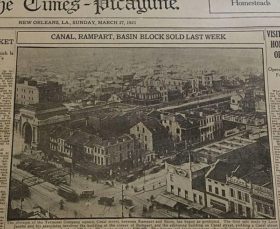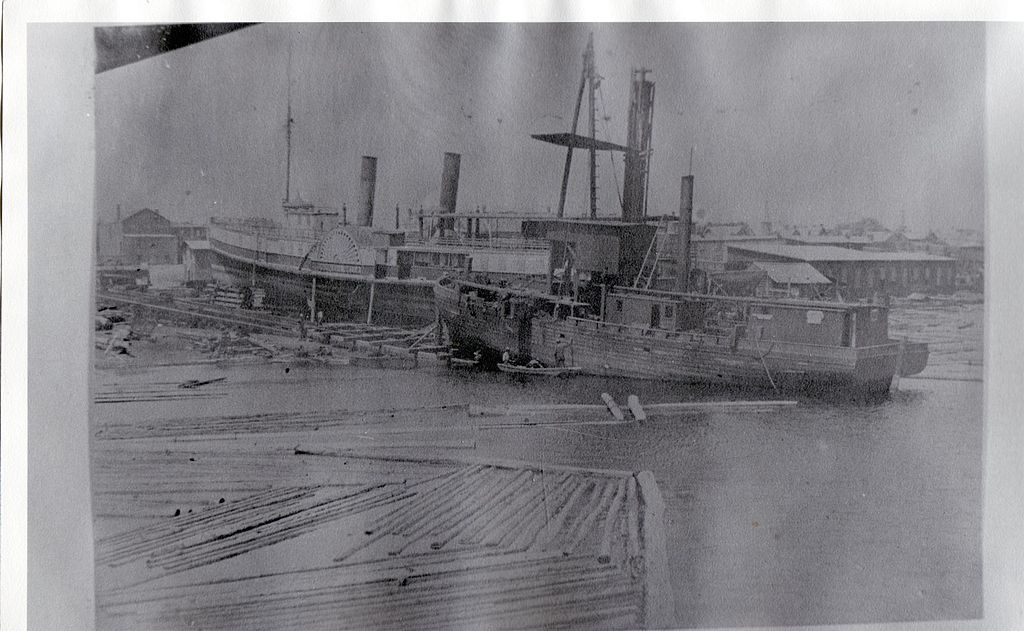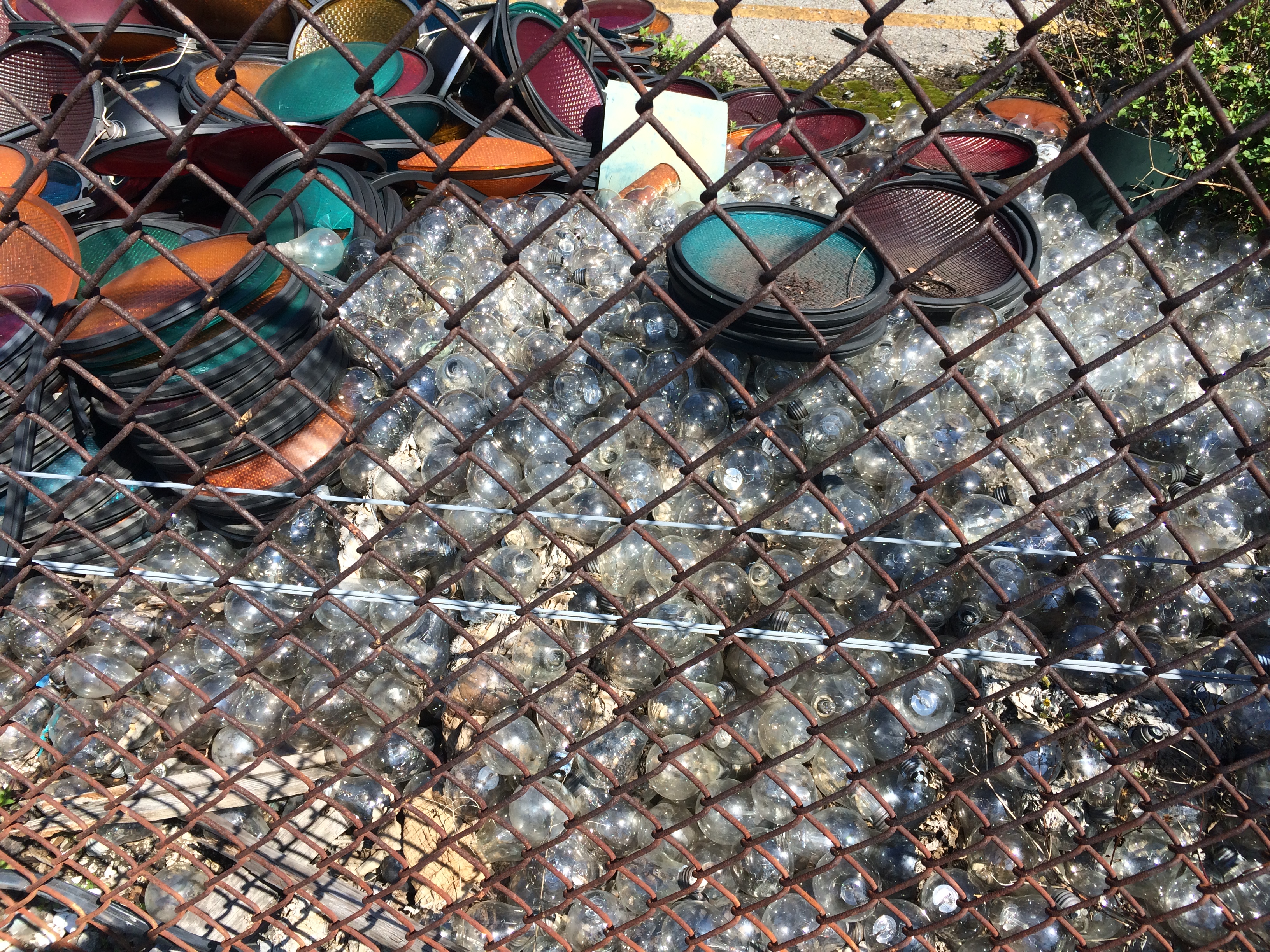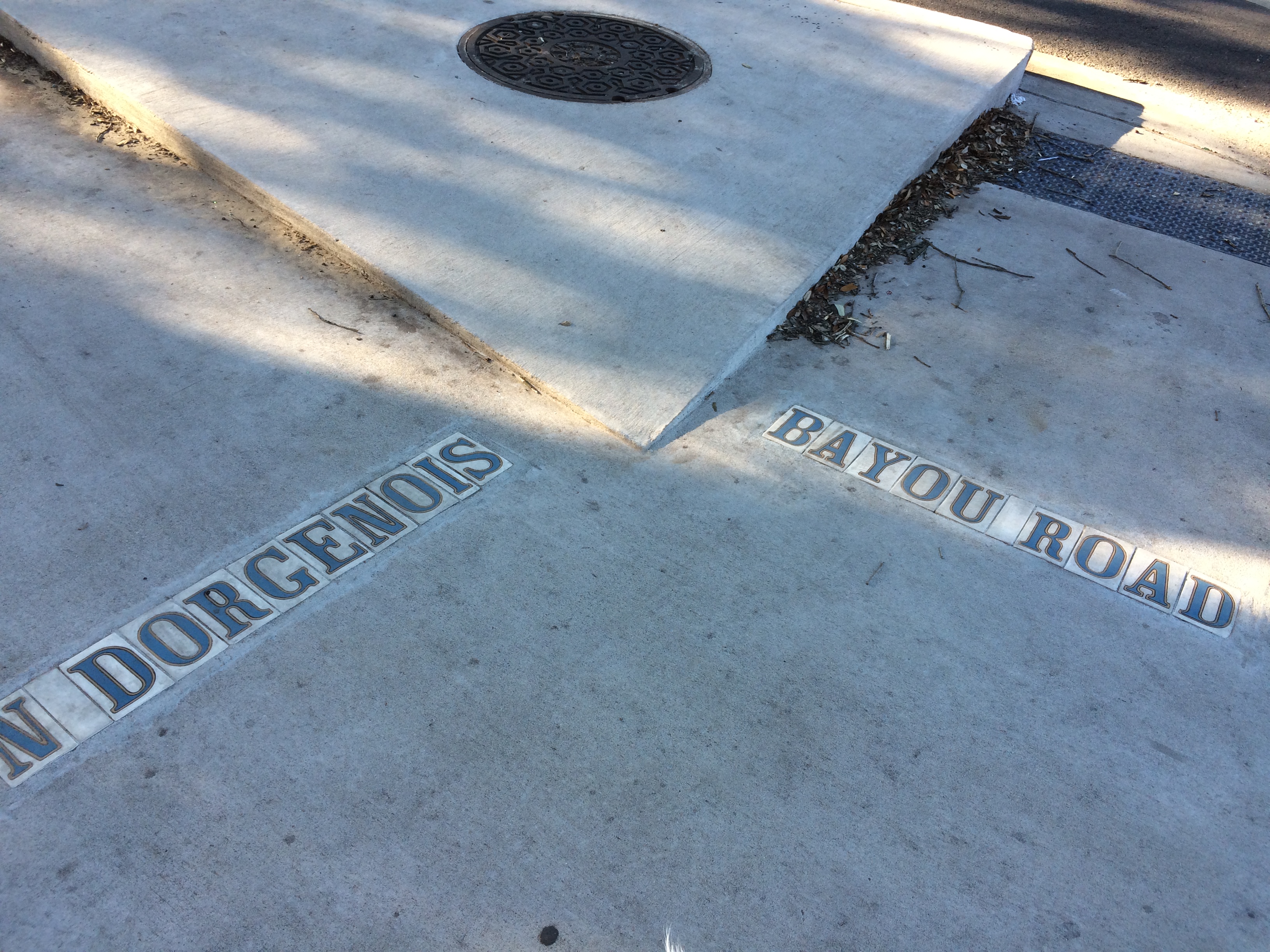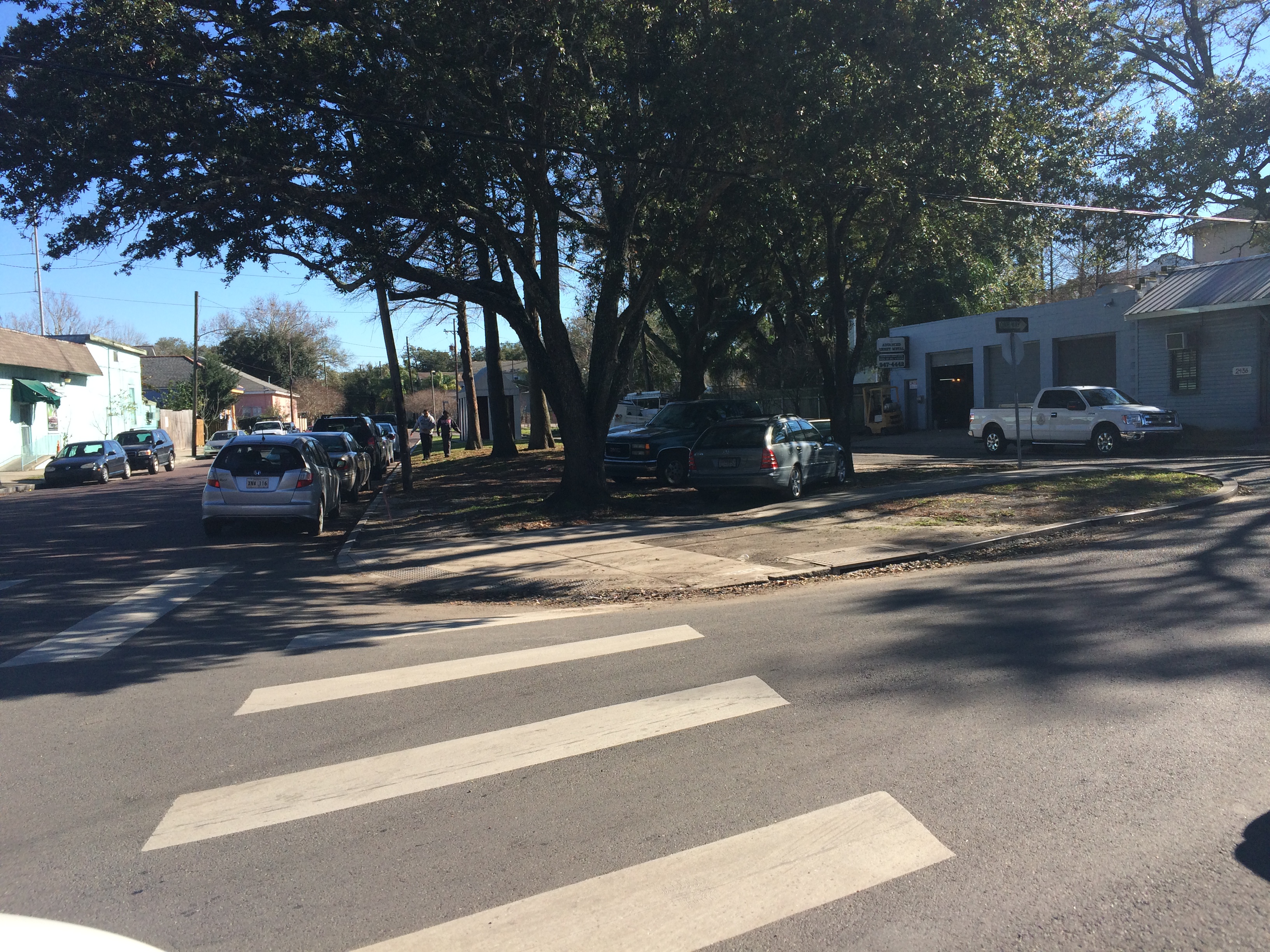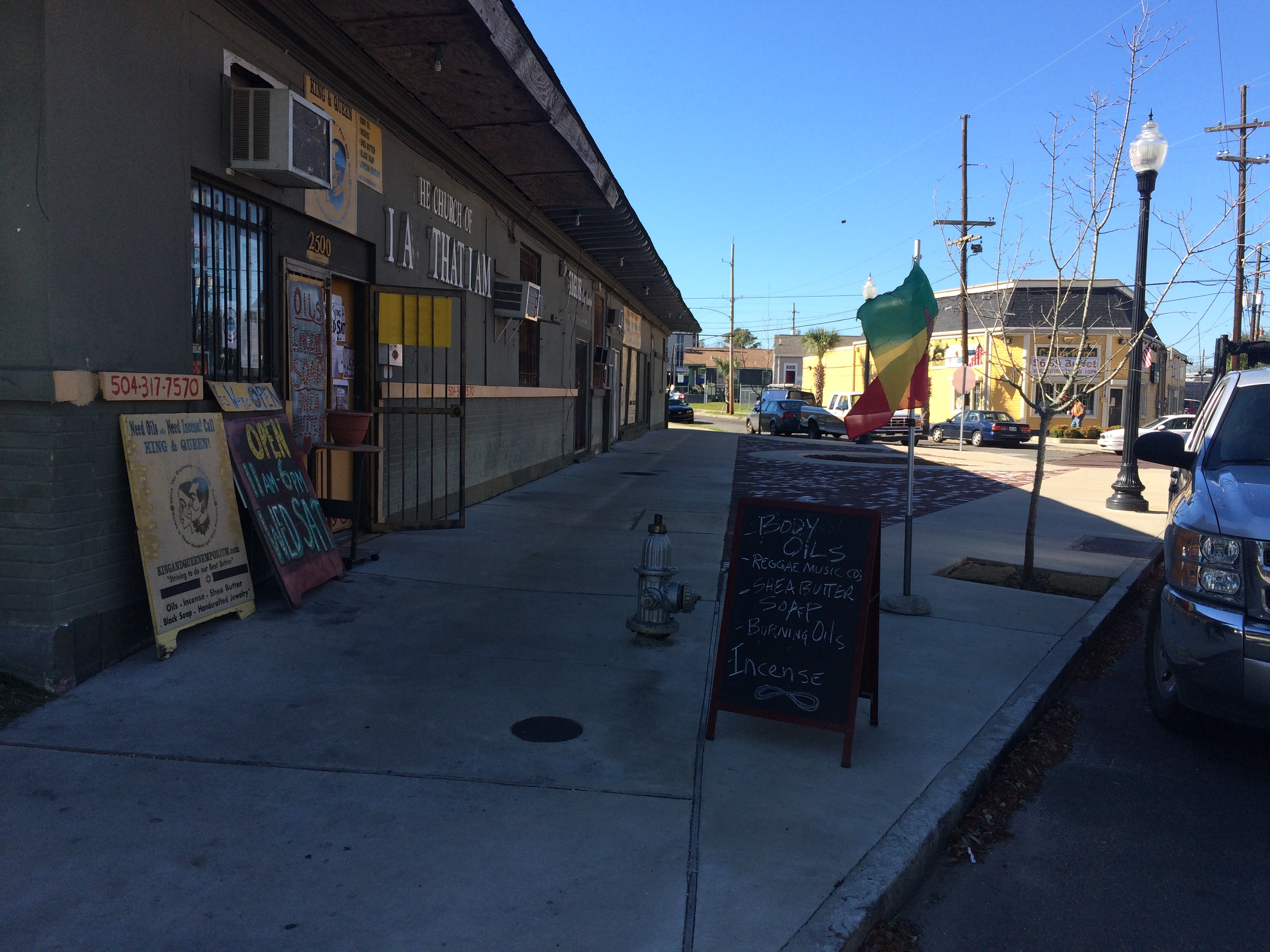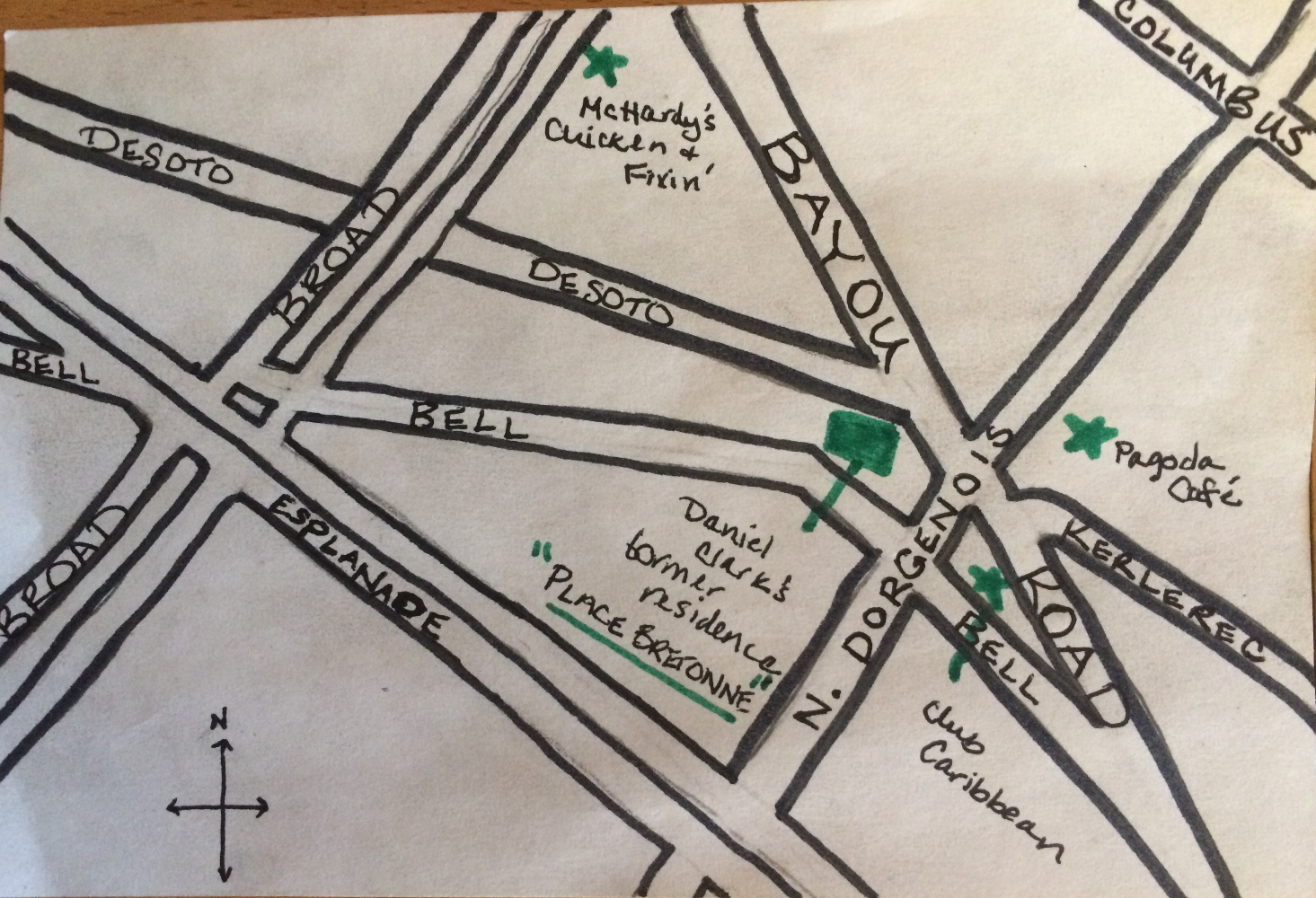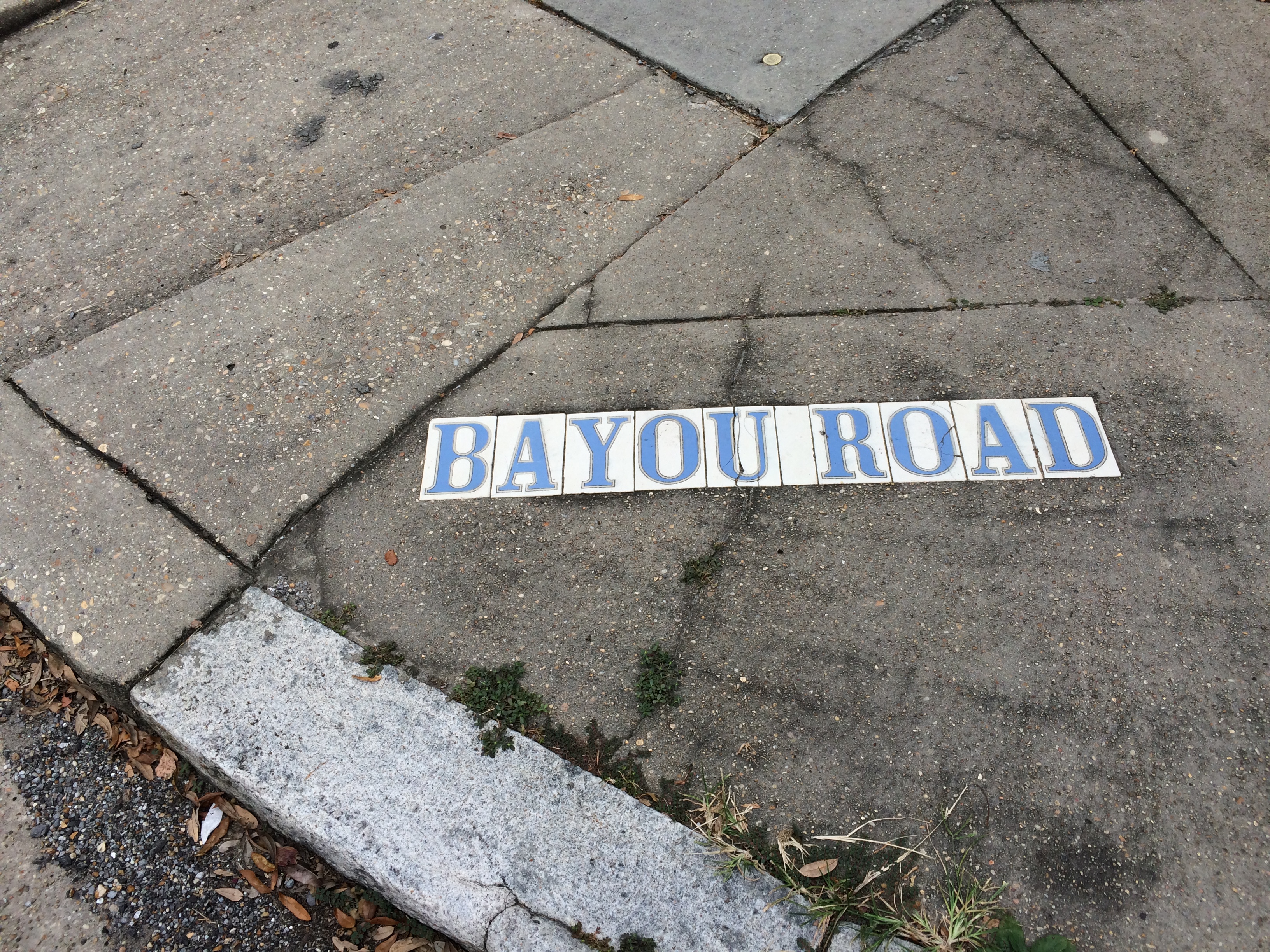You all, I found my poetic-historian soulmate!
Over the past two years, I have skimmed the headlines of nearly 10,000 Times-Picayune articles from 1837 to 1988. I have come across articles on subjects ranging from the mundane to the fantastical, and nearly every one of them was interesting in some way.
However, I have never found (nor would I have ever expected to find) a journalist whose writing voice I could relate to. After all, I’m not a journalist; a stylistic comparison has never felt relevant. What’s more, until I hit the 1970s and 1980s, most articles were noticeably (and understandably) dated.
And yet, I discovered a piece tonight called “New Orleans’ Canals Go Underground,” from February 1950, and was amazed to discover a voice with both drama and intelligence, poeticism and fact. I was riveted from beginning to end, and was even shocked to learn a new fact about the Old Basin (Carondelet) Canal I’d never come across before—something that happens less and less the more research I do, although of course one always has more to uncover. You can imagine my further delight in learning the writer was a woman (!) which was very rare up until more recent decades.
Here are a few excerpts from Diane Ferrell’s 1950 article for your reading pleasure, with a few of my comments woven in:
“Drownings, freak automobile accidents—many of these will end when the canals in New Orleans are subsurfaced. [Love that word “subsurface”! Microsoft Word doesn’t even recognize it!]
“But with them an era will also close—an era which has been marked by the birth of commerce and the death of men. [Yus. Love the drama.]
“The long period from the building of the first canal in the mid-1700s belongs to cotton-laden steamboats, Zulu kings, battles for the city’s existence, to the kids who learned to swim in the canals, to those who died in them. It belongs to the 10,000 Irishmen who were gobbled up in the disease-ridden muck of the New Basin canal.…
“Ten thousand foreigners are buried in the banks of the New Basin canal. Working in the cholera-laden swamp they dug the canal and their graves with the same hands, with the same shovels. [So dramatic! Not to mention, I’ve always wondered why slaves weren’t made to build the New Basin Canal (dug in the 1830s) like they were forced to dig the Old Basin, and Ferrell explains later in the article that they were too valuable to be sacrificed, unlike the thousands of immigrants, the “dispensable” labor, who were trying to call New Orleans home at that time.]
“The first police force New Orleans ever had owed its saber-swaggering existence to a canal. [Wuuuut? First of all, I love this “saber-swaggering” image. Second of all, Ferrell explains later a tidbit of history I hadn’t yet come across in my research about the Old Basin: that Gov. Carondelet charged landowners for the right to use the canal to drain their plantations, and used the funds to create the city’s first police force at the end of the 1700s.]
“Twelve years ago, the dug-up gunnels [Such poetic sounds!] of an old flatboat brought to light a mystery waterway that few knew ever existed. [Wuuuut? A mystery waterway? Ferrell explains elsewhere in the article that a partial barge was unearthed beneath the intersection of St. Charles and St. Andrew back in the 1930s, the vestige of an old canal that used to trickle through the area.]
“A New Orleans canal had one of the first two women in the United States who were employed by the government as lighthouse keepers.…” [WORD! I’m fairly certain she is referring to Bayou St. John here—I remember coming across a mention of a female lighthouse keeper in another article from somewhere around the turn of the 20th century, but I hadn’t realize she was such a pioneer. More on this soon!]
Farrell closes out the riveting piece with the following: “…it is…the open canals that have mirrored our history and washed away our dead. Every time the city fills in or subsurfaces one of them—we are healing a scar, closing a chapter, covering a grave.” [Mic drop.]
Times-Picayune, 12 Feb. 1950, p. 148. NewsBank, infoweb.newsbank.com/resources/doc/nb/image/v2:1223BCE5B718A166@EANX-NB-12B0D8D602B78CC5@2433325-12B096409BA28E03@147-12B17A511651CE34?p=AMNEWS. Accessed 6 Mar. 2017.
